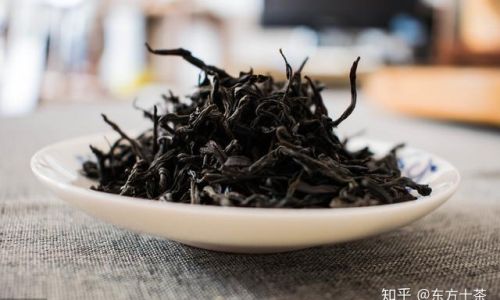In an era dominated by diverse culinary landscapes and endless food trends, the phrase “吃过都说好” (“those who have tried it all say it’s good”) has emerged as a testament to the enduring power of exceptional taste and quality. This simple yet profound statement encapsulates a universal truth: when a dish, beverage, or culinary experience transcends cultural, geographic, and demographic boundaries, it earns a reputation that resonates globally. From street food stalls in Bangkok to Michelin-starred restaurants in Paris, the quest for flavors that unite rather than divide has become a cornerstone of modern gastronomy. This article explores the science, culture, and psychology behind why certain foods earn the coveted title of “tasted and loved by all,” while examining real-world examples that have achieved this status.
The Science of Universal Appeal
At its core, the concept of “tasted and loved by all” hinges on the biology of human taste perception. Humans share five primary taste receptors: sweet, salty, sour, bitter, and umami. Foods that balance these flavors often appeal to the broadest audiences. For instance, chocolate—a global favorite—combines sweetness with umami-rich cocoa, creating a sensory experience that activates multiple pleasure centers in the brain. Similarly, fried chicken’s crispy, salty exterior and juicy, savory interior exploit the brain’s craving for contrasting textures and flavors.

However, universal appeal extends beyond taste. Aroma, texture, and even temperature play pivotal roles. The sizzle of a freshly cooked steak, the creaminess of gelato, or the spicy kick of salsa all engage multiple senses, creating a multisensory experience that humans inherently crave. Neuroscientists argue that such experiences trigger the release of dopamine, a neurotransmitter linked to reward and pleasure, reinforcing the desire to return to these foods.
Cultural Bridges Built on Food
Food has long served as a cultural ambassador, dissolving barriers and fostering connections. Consider pizza, a dish born in Naples, Italy, that now graces menus from Tokyo to Toronto. Its simplicity—a crisp crust, tangy tomato sauce, and melted cheese—allows for endless customization while retaining a core identity. Similarly, sushi, once a niche Japanese delicacy, has evolved into a global phenomenon, with chefs worldwide adapting it to local tastes (e.g., California rolls in the U.S. or sushi burritos in Mexico). These dishes succeed because they respect their cultural roots while embracing adaptability, a balance critical to earning the “tasted and loved by all” label.
The story of hummus offers another compelling example. Originating in the Middle East, this chickpea-based dip has become a pantry staple in Europe, North America, and beyond. Its appeal lies in its versatility—served as a dip, spread, or side dish—and its alignment with dietary trends like veganism and gluten-free eating. By straddling tradition and modernity, hummus has transcended its geographic origins to symbolize inclusivity.
The Role of Social Media in Amplifying Global Praise
In the digital age, social media platforms like Instagram, TikTok, and YouTube have democratized food criticism, turning everyday consumers into influencers. A viral video of a Korean street food vendor making tteokbokki (spicy rice cakes) or a TikTok trend showcasing Dalgona coffee can propel a dish from obscurity to global fame overnight. This phenomenon, often dubbed “food porn,” relies on visually stunning content that triggers immediate cravings.
The “tasted and loved by all” effect is amplified when these platforms create a sense of urgency. Limited-time offers, like McDonald’s McRib sandwich or Starbucks’ Pumpkin Spice Latte, leverage scarcity to generate buzz. Meanwhile, user-generated content—such as diners sharing photos of perfectly plated dishes—serves as free advertising, building trust through authenticity.
Case Studies: Dishes That Earned Universal Acclaim
-
Pad Thai: Thailand’s national dish exemplifies how balance and accessibility drive global love. Stir-fried rice noodles, tamarind, fish sauce, and a protein (often shrimp or tofu) create a symphony of sweet, salty, and sour flavors. Street vendors in Bangkok and high-end restaurants alike serve it, proving that authenticity and adaptability can coexist.
-
Tacos al Pastor: Mexico’s gift to global cuisine, this dish layers marinated pork, grilled pineapple, and cilantro on a corn tortilla. Its popularity stems from its portability, affordability, and the explosive flavor combination of smoky meat and tangy fruit.
-
Ramen: Once a humble Japanese noodle soup, ramen has evolved into a culinary art form. Chefs in New York, Berlin, and Melbourne now offer hyper-regional variations, from Tokyo’s tonkotsu (pork broth) to Sapporo’s miso-based bowls. Its adaptability and intense flavor profiles have made it a symbol of global fusion.
The Psychology of Shared Experiences
Human beings are social creatures, and food often serves as a catalyst for shared experiences. A 2021 study by the University of Oxford found that eating together strengthens social bonds, reduces stress, and enhances emotional well-being. Dishes that earn universal praise often facilitate these interactions. Think of pizza parties, barbecues, or communal hot pot meals—all designed to bring people together.

Moreover, nostalgia plays a significant role. Foods tied to childhood memories or cultural heritage, such as grandma’s apple pie or a mother’s homemade curry, evoke powerful emotions. When these dishes are shared globally, they create a sense of collective nostalgia, bridging generations and cultures.
Challenges to Universal Acclaim
While many dishes achieve global fame, maintaining it is no small feat. Cultural appropriation, sustainability concerns, and evolving dietary preferences pose significant challenges. For example, the rise of veganism has forced traditional meat-centric dishes like burgers or kebabs to innovate with plant-based alternatives. Similarly, concerns about the environmental impact of palm oil in processed foods have led to boycotts and recipe reforms.
Authenticity is another hurdle. As dishes go global, purists often criticize adaptations as “inauthentic.” However, culinary historians argue that all cuisines evolve through cultural exchange. The key lies in respecting origins while embracing creativity—a delicate balance that the most successful global foods achieve.
The Future of “Tasted and Loved by All”
As climate change and health awareness reshape dietary habits, the future of universally praised foods will likely prioritize sustainability and nutrition. Insect-based proteins, lab-grown meat, and fermented foods are already gaining traction. Meanwhile, plant-based alternatives to dairy and meat, like oat milk or the Impossible Burger, are redefining what it means to appeal to the masses.
Technology will also play a role. 3D-printed foods, AI-driven recipe creation, and hyper-personalized nutrition apps could democratize access to unique flavors, allowing even niche dishes to earn global acclaim. Imagine a world where a Kenyan ugali recipe, optimized for dietary needs and cultural preferences, is shared and loved by millions worldwide.
Conclusion: The Enduring Power of Shared Delight
The phrase “吃过都说好” is more than a marketing slogan—it’s a reflection of humanity’s shared desire for connection, pleasure, and belonging. Foods that earn this distinction do so by respecting tradition, embracing innovation, and appealing to our most fundamental sensory and emotional needs. As the world grows smaller and more interconnected, the quest for universal culinary delight will only intensify, reminding us that no matter where we come from, a great meal has the power to unite us all.
In the end, the legacy of “tasted and loved by all” lies not just in the dishes themselves, but in the stories they tell, the memories they create, and the bridges they build across cultures. So the next time you savor a bite of pizza, slurp a bowl of ramen, or share a plate of tacos with friends, remember: you’re not just eating—you’re participating in a global conversation that has spanned centuries and continues to evolve, one delicious bite at a time.






0 comments